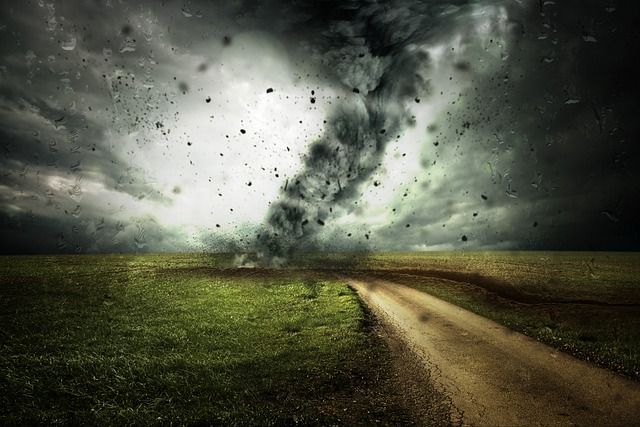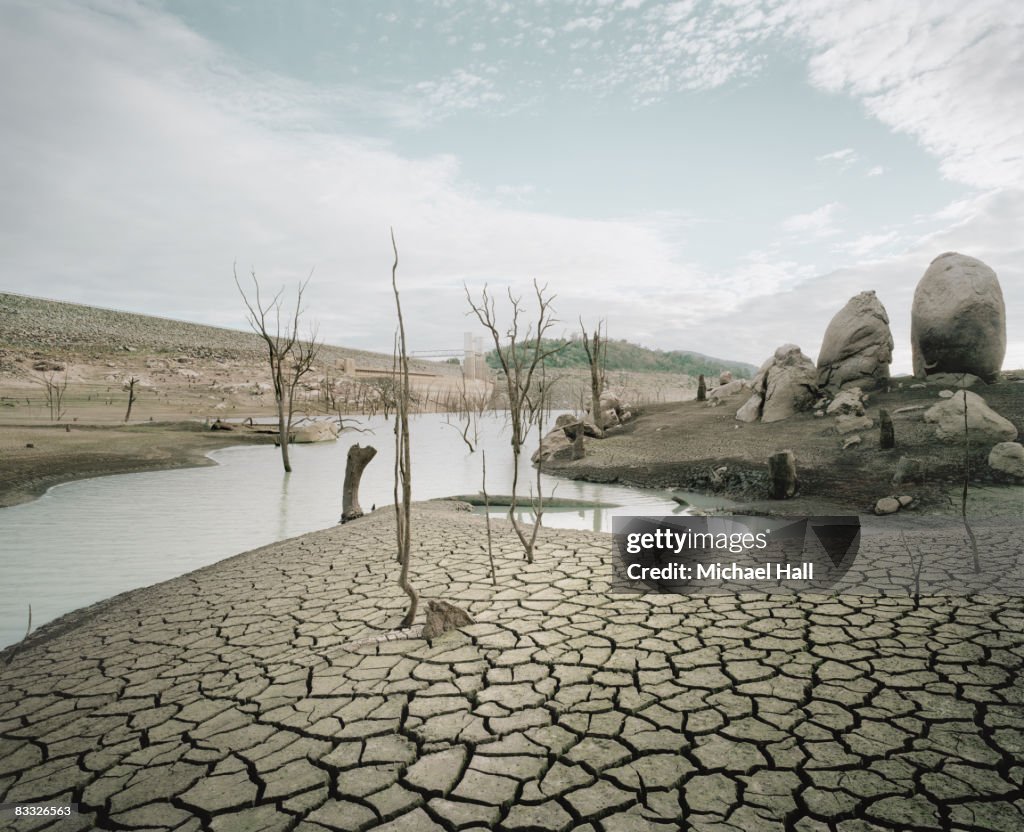
Global temperature and the climate is shifting. The planet is heating up, and there is now a strong scientific agreement that this process is real and largely caused by human activity. As global temperatures continue to climb and wildlife habitats shrink, the ability of ecosystems to adjust naturally is rapidly decreasing.
Many believe that climate change is among the most serious dangers our world faces. In recent years, numerous regions have experienced rising temperatures and/or increasingly extreme weather events.
For several centuries, scientists have recorded a steady rise in the average Global Temperature of the Earth’s near-surface air and oceans. Projections show that certain countries will be especially at risk from this warming trend. Environmental experts widely regard Global Temperature as the most significant environmental challenge of the 21st century—and due to its geographic position, Bangladesh is expected to be one of the most severely affected nations.
Climate change refers to any long-term alteration in weather patterns over periods from decades to millions of years. Such changes may involve shifts in average conditions, the likelihood of extreme events, or other aspects of the overall distribution of weather. These changes may be localized to a specific area or span the entire globe.
Read more about FIFA World Cup 2026
Read more about Global Warming
In modern discussions, particularly regarding environmental policy, “climate change” often refers to present-day shifts in climate (see: global warming). For details on temperature changes over different timeframes and the available measurement records, see “temperature record.” The causes of climate change over the past century have been linked to human influence.
Studies have indicated that air pollution from burning fossil fuels causes clouds to bounce more sunlight back into space. This phenomenon, called global dimming, results in less heat and energy reaching Earth’s surface. At first glance, it may seem like an unexpected ally against climate change. However, scientists believe that global dimming contributed to the droughts in Ethiopia during the 1970s and 1980s, which caused millions of deaths, because cooler northern hemisphere oceans hindered rain formation. Global dimming also conceals the full extent of global warming. When pollutants responsible for global dimming are reduced without simultaneously cutting greenhouse gas emissions, a sudden spike in warming has been recorded, leading to severe health and environmental crises—such as the 2003 European heatwave that claimed thousands of lives.
There is widespread agreement that action is needed to address global warming and climate change. The first major obstacle, however, has been finding consensus on a unified plan. In 1988, the United Nations Environment Programme (UNEP) and the World Meteorological Organization (WMO) established the Intergovernmental Panel on Climate Change (IPCC) to evaluate scientific findings on global warming. In 1990, the IPCC determined that there was strong global agreement that climate change was caused by human activity. This conclusion paved the way for the United Nations Framework Convention on Climate Change (UNFCCC), an international treaty signed by more than 150 nations at the Rio Earth Summit in 1992. This section explores that Convention and some of its key guiding principles.
Some small island nations have already begun to feel the effects of climate change. Key elements such as climate justice, fairness, and sustainable development are central to the discussion, yet they are often overlooked in mainstream narratives. Ensuring equal access to the planet’s atmosphere for every person, along with fairness both within nations and between them, is essential.
One principle that was agreed upon is known as “common but differentiated responsibilities.”
When the majority of the world’s nations signed the Climate Change Convention—including countries like the United States, which later withdrew from the Kyoto Protocol—it was recognized that today’s wealthier nations bear the main responsibility for global warming. This is because greenhouse gases linger in the atmosphere for decades, and industrialized nations have been emitting climate-altering pollution for far longer than developing nations.
It was also acknowledged that poorer countries face urgent challenges such as meeting basic human needs and eradicating poverty. Therefore, it was deemed unjust to impose strict emissions limits on these nations when it is the wealthier countries that have primarily caused the problem. Many developing nations and NGOs have voiced concerns about the lack of public involvement in climate negotiations and the disproportionate impact on poorer countries. The reality is that the poorest regions will experience the harshest consequences of climate change.
The Kyoto Protocol introduced “flexibility mechanisms” as various approaches to achieving emissions reductions. These include Emissions Trading, Joint Implementation, and the Clean Development Mechanism. However, these measures have stirred significant controversy, as they were largely pushed for by the United States to secure its participation in the agreement. Critics argue that some of these mechanisms fail to deliver genuine reductions in emissions.
Developing nations and many non-governmental organizations have increasingly raised concerns about the importance of public involvement in global warming discussions, as well as the consequences these negotiations have on vulnerable populations and less wealthy countries. The effects of climate change are expected to hit the world’s poorest nations the hardest, and in certain cases, small island states have already begun to experience these impacts. Issues such as climate justice, fairness, and sustainable growth are central to this debate, yet they are frequently overlooked in mainstream discussions. Equal access to the atmosphere for all people and fairness both within nations and between them remain critical priorities.
One agreed-upon concept was the principle of common but differentiated responsibilities.
When most of the world’s countries signed the climate change convention (including the United States, which later withdrew from the Kyoto Protocol), there was consensus that today’s wealthier nations bear the primary responsibility for global warming. This is because greenhouse gases linger in the atmosphere for decades, and industrialized nations have been releasing climate-altering emissions for centuries, long before developing nations began industrializing.
It was also recognized that poorer countries face urgent challenges in meeting basic needs and eliminating poverty. Therefore, imposing strict emissions limits on these countries would be unjust, given that wealthier nations are the primary contributors to the problem.
Nevertheless, some developing nations have already begun cutting emissions, demonstrating that if they can take action, wealthier countries are capable of doing the same.
Scientific studies have shown that pollutants from burning fossil fuels can cause clouds to reflect more sunlight back into space. This phenomenon, known as global dimming, reduces the amount of heat and solar energy reaching Earth’s surface. At first glance, it may seem like an accidental shield against global warming. However, scientists believe that global dimming played a role in the Ethiopian droughts of the 1970s and 1980s, when millions perished, because cooler northern hemisphere oceans hindered rain formation. Moreover, global dimming masks the full extent of global warming. When air pollution causing global dimming is reduced without simultaneously addressing greenhouse gas emissions, rapid temperature increases can occur, leading to severe ecological and human health crises, such as the deadly 2003 European heatwave that claimed thousands of lives.
Global warming refers to the rise in the Earth’s average temperature. As our planet continues to heat up, natural disasters such as hurricanes, droughts, and floods are becoming more frequent.
It describes the increase in the average temperature of the air near the Earth’s surface and its oceans, along with expectations that this trend will persist.
Global warming can also be defined as a possible rise in the overall atmospheric temperature worldwide, resulting from the greenhouse effect.
It is considered one of the most significant factors influencing future changes in weather patterns. In essence, global warming is the gradual increase in average temperatures that warms the Earth’s atmosphere. This phenomenon has been occurring for a long time, but the acceleration in the past century has been particularly concerning.
Over the last hundred years, the Earth’s atmospheric temperature has risen by approximately 0.74–0.18 °C. According to findings from the Intergovernmental Panel on Climate Change (IPCC), this increase has been largely driven by higher concentrations of greenhouse gases, leading to unprecedented warming of the planet’s surface.
Other contributing factors include volcanic eruptions and fluctuations in solar activity. Based on several IPCC models, projections suggest that global temperatures could rise between 1.1 and 6.4 °C from 1990 to 2100. Such an increase is expected to trigger climate shifts and extreme weather events, including sea-level rise, altered precipitation patterns, excessive rainfall, melting of glaciers and polar ice caps, as well as more intense storms and hurricanes.
During daylight hours, sunlight — including visible light, infrared radiation, and radio waves — reaches the Earth. A portion of this energy is absorbed by the planet’s surface, while the rest is reflected back toward the atmosphere. Once in the atmosphere, some of this heat is absorbed by carbon dioxide and water vapor, while the remaining portion escapes into space. At night, when there is no incoming sunlight, carbon dioxide and water vapor release this stored heat back to the Earth. Without this process, our planet would become too cold for life to survive.
In this way, carbon dioxide and water vapor help regulate Earth’s temperature. However, in recent times, the concentrations of carbon dioxide, methane (CH₄), chlorofluorocarbons (CFCs), and nitrous oxide (N₂O) have risen significantly. This gradual increase in greenhouse gases is causing a steady rise in global temperatures, which in turn affects the ozone layer. The depletion of the ozone layer allows more ultraviolet radiation to reach the Earth’s surface, contributing to both ozone holes and global warming. Therefore, global warming is a consequence of the enhanced greenhouse effect.
The Sun is Earth’s main supplier of energy — a blazing sphere so hot that its warmth reaches us from more than 150 million kilometers away. Its light enters the atmosphere and bathes our planet. Roughly a third of this incoming solar energy bounces back into space, reflected by bright surfaces such as ice sheets, water, and other reflective areas. The remaining two-thirds is absorbed, heating the land, oceans, and air.
A large portion of this heat escapes back into space, but some is retained in the atmosphere. This retention is called the greenhouse effect. Without it, Earth’s average temperature would be a frigid –18 °C, despite the Sun’s continuous energy supply.
In such cold conditions, life might never have moved beyond the oceans. Thanks to the greenhouse effect, however, heat emitted from Earth is partially trapped in the atmosphere, giving us a pleasant global average temperature of about 14 °C.
Only around half of the sunlight reaching Earth is infrared radiation, which directly warms the atmosphere as it passes through. The other half arrives as higher-frequency radiation, becoming heat only after striking Earth’s surface and later being re-emitted into space as infrared waves.
This conversion of sunlight into infrared radiation is vital because the atmosphere can absorb infrared. On a cold, clear night, some of this radiation that would otherwise escape into space becomes trapped within the atmosphere. Like a heater in the center of a room, the atmosphere radiates warmth in all directions.
Some of this heat eventually escapes into the cold void of space, while some returns to Earth’s surface, increasing temperatures. How much warming occurs depends on the amount of energy retained in the atmosphere — and that, in turn, is determined by its composition.





